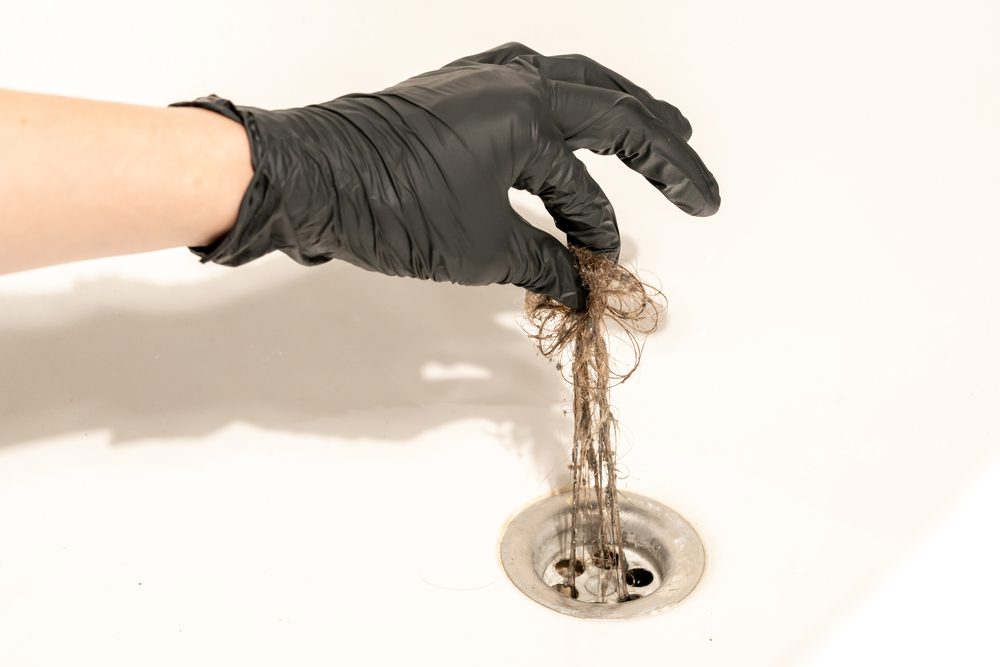How To Get Hair Out Of Drain: 5 Methods To Try

If you’re dealing with a clogged drain due to hair buildup, you’re not alone. Hair is a common culprit behind drain blockages, leading to slow drainage and unpleasant odors. In this article, we’ll explore 5 effective methods to remove hair and easily clear a clogged drain, helping you learn how to get hair out of the drain and restore smooth water flow in your sink or shower.
Addressing the Problem
Hair buildup in drains is a common issue that can occur in both sinks and showers. As hair accumulates over time, it can trap other debris and form a clog that restricts water flow. If left untreated, a clogged drain can lead to standing water, slow drainage, and even more severe plumbing issues. Fortunately, there are several methods you can try to remove hair from drains and prevent clogs from forming.
Manual Removal
One of the simplest and most effective ways to get hair out of a drain is to remove it manually. Start by unscrewing the drain cover or removing the stopper to access the inside of the drain. Use a pair of tweezers, needle-nose pliers, or a wire coat hanger to grab hold of the hair and pull it out of the drain. Be sure to wear gloves to protect your hands from coming into contact with any debris or bacteria.
Baking Soda and Vinegar
Another popular method for clearing hair from drains is to use a mix of baking soda and vinegar. Pour a pot of boiling water down the drain to loosen any hair and debris. Then, sprinkle a generous amount of baking soda into the drain then a cup of vinegar. Allow the mixture to fizz and bubble for several minutes before flushing the drain with hot water. The combination of baking soda and vinegar can help break down hair and other organic materials, making it easier to flush them out of the drain.
Plunger
A plunger can be an effective tool for clearing hair clogs in sinks and showers. To use a plunger, place the suction cup over the drain opening and press down firmly to create a seal. Push and pull the plunger in a rapid motion to dislodge the hair clog and create suction. Continue plunging for several minutes, then remove the plunger and run hot water down the drain to flush out any remaining debris.
Drain Snake
For stubborn hair clogs that are difficult to remove with other methods, a drain snake or auger can be a useful tool. Insert the end of the drain snake into the drain opening and slowly feed it down the pipe while turning the handle clockwise. Continue feeding the drain snake until you encounter resistance, then rotate the handle in the opposite direction to dislodge the clog. Once the clog has been cleared, remove the drain snake and flush the drain with hot water to remove any remaining debris.
Enzyme Drain Cleaner
If traditional methods fail to clear the hair clog, you may want to try using an enzyme drain cleaner. These cleaners contain beneficial bacteria and enzymes that break down organic matter, including hair, grease, and soap scum. Simply pour the enzyme drain cleaner down the drain according to the manufacturer’s instructions and allow it to work its magic. After a few hours or overnight, flush the drain with hot water to wash away the dissolved debris.
Clearing the Path: Effective Strategies for Removing Hair from Drains
Removing hair from drains can be a simple yet challenging task. By trying the methods outlined in this article, you can effectively clear hair clogs and maintain smooth water flow in your sink or shower. Whether you opt for manual removal, baking soda, and vinegar, a plunger, a drain snake, or an enzyme drain cleaner, taking proactive measures to address hair buildup can help prevent clogs and keep your plumbing system running smoothly. Incorporate these methods into your regular maintenance routine to enjoy a clog-free and hassle-free draining experience. If the problem is more severe and affecting you, getting an emergency plumbing service may be beneficial too.
